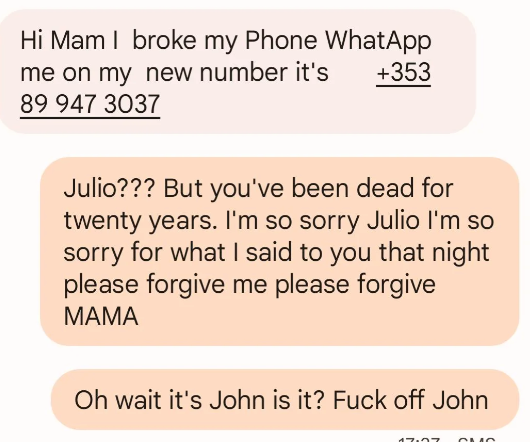Scammers are back again with an updated version of ‘Hi Mum’ or ‘Hi Mom’ scam text messages. More than five hundred people living in Australia, America, and UK have reported different variations of the scam texts.
In order to avoid having thousands of people become victims to this convincing scam, We’ve provided helpful tips (as Cybersecurity Professionals) on how to outsmart the scammers. But first, lets a take look at the different Hi Mum scam text messages.
Hi Mum Scam Texts
Hi Mum scam texts falls into the category of social engineering scams. This scam manipulate victims by impersonating people they trust to ask for money, credit card info, confidential info, etc. This could be via text messages, WhatsApp chats, emails, etc.

There are different formats of Hi Mom scam text. The most popular one being; ‘Hi Mum, I’ve crashed my phone, message me on WhatsApp‘. Another popular one; ‘Hi Mum, I’m testing you from a friend’s phone. I’ve smashed mine and their phone is about to die. Can you WhatsApp my new number please‘
Lately, the scammers have created a more convincing version of the scam text. They’d claim they’re in trouble and ask that the recipient send some amount of money immediately.
Unlike the previous versions, the scammers no longer dilly around in simple conversations in order to gain trust, they simply strike immediately.
the Hi Mum scam text messages have the following red flags;
- It comes from an unknown number
- Claims it’s a new number and they don’t have access to the old number
- Carries a note of urgency
- Eventually asks for money – either as a loan or money to fix an issue (they often cite broken phone or laptop)
- Communicates only via text messages
How To Avoid Being a Victim of Hi Mum/Hi Mom Scams
- Create a code or password for your family to be used during emergencies especially when money is requested to be sent. This should be obscure security questions that could not be gotten off social media or through a data breach.
- Insist on hearing the voice of the other person even if they say they’re not available to answer calls.
- Always call the known number to verify if it’s actually non-functioning as claimed
- Stop replying once correct answers aren’t provided or if they refuse to answer calls.
- Block the sender’s number
However, if you’ve already fallen victim of this scam, you should immediately call your financial provider and narrate your experience. If you act fast you’d be able to get your money back!
See latest alert – Vodafone Points Scam
